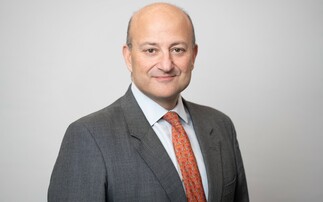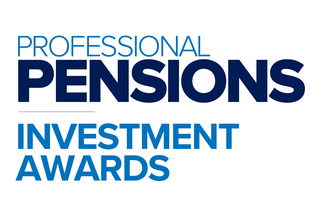Hermes Investment Management head of private debt Patrick Marshall explains the appeal of capturing corporate lending returns
 As tougher regulations on capital requirements force banks to scale back on corporate lending, asset management firms are stepping forward to capture the strong and stable yields that this market offers. Hermes Investment Management has developed a robust strategy for capturing the compelling returns from this growing market.
As tougher regulations on capital requirements force banks to scale back on corporate lending, asset management firms are stepping forward to capture the strong and stable yields that this market offers. Hermes Investment Management has developed a robust strategy for capturing the compelling returns from this growing market.
The European regulatory landscape in the post-financial crisis era is changing the way banks operate, as the focus on balance sheet strength and capitalisation means systemically important institutions must own lower-yielding assets.
Banks have consequently cut back on business lending. Larger companies have been able to turn to the corporate-bond market for financing, taking advantage of record-low interest rates to raise debt, but small- and medium-sized enterprises (SMEs) have not had this option. Their borrowing needs cannot reach the scale needed to access the bond market cheaply, creating a gap in the market.
Funds spot gap as bank lending slows
Prior to 2008, banks provided more than 80% of larger corporate loans in Europe, but this volume has fallen substantially since then. Hermes is among the fund managers and insurers that have seen the opportunity to lend directly - mainly in the form of senior-secured and unitranche loans - to mid-market European companies.
Since 2012, European direct-lending loan volumes have surged 120% year-on-year, with an estimated 86 funds raising more than £50bn1. The UK is the largest market for direct lending, offering a consistent pipeline of deals, strong investor protections and political support for the growth of the SME sector.
Returns have been strong in the UK considering the historically low interest rate environment. Senior-secured Term Loan B transactions with SMEs have typically generated LIBOR plus 3.5-5.5 per cent margins, with upfront fees of 2-3 per cent, resulting in an consequently attractive total yields. Since 2009, they have consistently provided about 50 basis points more margin than transactions with large companies.2
Offering strong and resilient returns in a low-yield environment, combined with the security owing to the loans' seniority in borrowers' capital structures, direct-lending strategies can serve a range of purposes for investors with long time horizons. These include: access to higher yielding, low-volatility assets that can help meet liabilities, a substitute for traditional fixed-income exposures, or a source of stable growth.
The corporate leveraged-lending market has benefited from the entry of asset managers. Not only are borrowers able to diversify their sources of long-term funding, institutional investors can capture the attractive yields on offer by working with fund managers who have expertise in the origination, structuring, monitoring, restructuring and workout of loans.
The UK mid-market
Hermes' loan portfolio is concentrated in the UK mid-market, which consists of about 34,100 companies employing a total of 4.2 million people. This resilient tier of the British economy made a similar contribution to annual growth as the real estate and banking sectors combined in 2014, with sales volume increasing 6.1 per cent.3
The companies that are expanding most rapidly are investing for growth and looking to develop technology, sales and marketing strategies and develop staff skills. However, more than a quarter of chief executives have expressed difficulties in consistently accessing funding.
Investment thesis: capital preservation and yield capture
Although investing in senior-secured and unitranche loans involves credit risks, the market has provided stable returns close to LIBOR plus 6% since the financial crisis. The market is growing, attracting more institutional investment and benefiting from government initiatives to strengthen the SME sector. These positive fundamentals, combined with the security afforded by senior loans' position at the top of borrowers' capital structures and investors' ability to negotiate protective covenants, underpin the enduring appeal of direct-lending strategies in a low-yield world: capital preservation and strong, resilient returns.
Patrick Marshall is head of private debt and CLOs at Hermes Investment Management
1 ICG, The rise and rise of direct lending, Private Debt Investor Dec/Jan 2015
2 LCD, an offering of S&P Global Market Intelligence
3 Grant Thornton, Pivoting to Growth, Investec Mid-Market 100
Further information
To find out more on Hermes Direct Lending Strategy please call:
Mark Miller
Head of UK Institutional
Tel: +44 020 7680 2205
Email: [email protected]
Disclaimer
Professional Investors only. Past performance is not a guide to future performance. The value of an investment call fall as well as rise and you may not get back the original amount invested. This article contains the views of Patrick Marshall at the time of writing (September 2016) and may not necessarily represent the views expressed or reflected in other Hermes communications, strategies or products. All figures, unless otherwise indicated, are sourced from Hermes. Issued and approved by Hermes Investment Management Limited ("HIML") which is authorised and regulated by the Financial Conduct Authority. Registered address: Lloyds Chambers, 1 Portsoken Street, London E1 8HZ. Telephone calls may be recorded for training and monitoring purposes. Potential investors in the United Kingdom are advised that compensation will not be available under the United Kingdom Financial Services Compensation Scheme.







